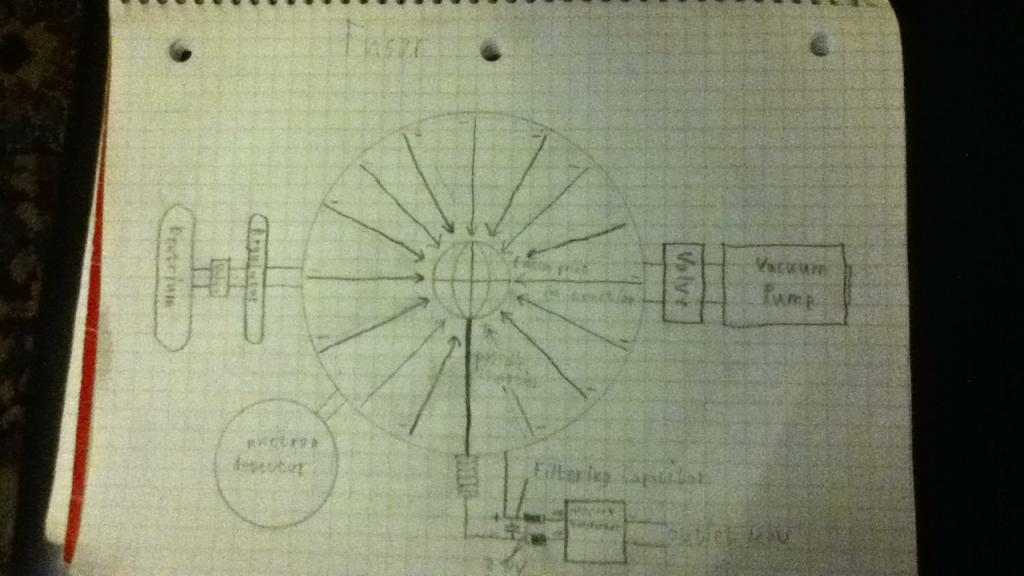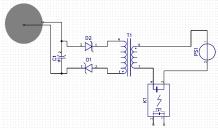Homemade Fusion Reactor
My current pet project is building a Farnsworth fusion reactor (a.k.a. "Fusor") for expiremental uses (emits high levels of UV light, low levels of soft x-rays, and low levels of neutrons). It is different from a nuclear fission reactor in the fact that, instead of splitting the atoms, it smashes them together. The idea is in fact quite simple, use a HV Transformer with the + end connected to the internal wire grid, and the - end connected to the walls of the metal vacuum sphere to accelerate the ions into the center of the grid, as shown in my attached schematics.




Comments
What are you doing for a metal sphere?
I have an actual vacuum pump and the bell chamber that goes with it. I'll give that a try it we think it will work. I thought the chamber had to be a pretty good sphere to work?
Yes understood, neutrons travel right through the Earth
Actually I think you are thinking about neutrinos traveling through the Earth. Neutrons can be stopped by dense materials (e. g. Uranium) and slowed by materials like water.
No, neutrons are specifically _not_ stopped by dense materials (heavy nucleii), they just bouncy off them without losing energy, light nucleii slow down neutrons
to thermal velocities, this is why water and graphite are used as moderators, but that doesn't stop them either. Specific isotopes with a large neutron cross section
are what stop most neutrons - consult a table of nuclear properties for details (some isotopes are billions of times better than others, note). Neutron absorption
also depends on the speed of the neutrons for each isotope...
Uranium stops neutrons by undergoing fission, or transmuting to fissile plutonium-239, thus generating far more dangerous radiation than is absorbed.
http://en.wikipedia.org/wiki/Neutron_radiation
Nuclear reactor buildings generate an enormous neutron flux, but the substantial containment buildings (20 feet of damp concrete) thermalize those that escape, and
neutron absorbing materials like boron are added to mop up the remaining flux.
In the wild neutrons decay with a half-live of 10 mins or so. In practice they are likely to find a nucleus that absorbs them well before that. Absorbing a neutron
often creates a radioactive product (sodium-23 in the blood for instance becomes extremely radioactive sodium-24). The diagnosis for neutron irradiation is measuring sodium-24. (See 2nd paragraph here: http://en.wikipedia.org/wiki/Isotopes_of_sodium )
Volunteering can pay off. I met Sir George Solti and most of the Chicago Symphony Orchestra that way, too. Their instruments were stuck in a snowstorm in Colorado so we got to spend a lot of time together.